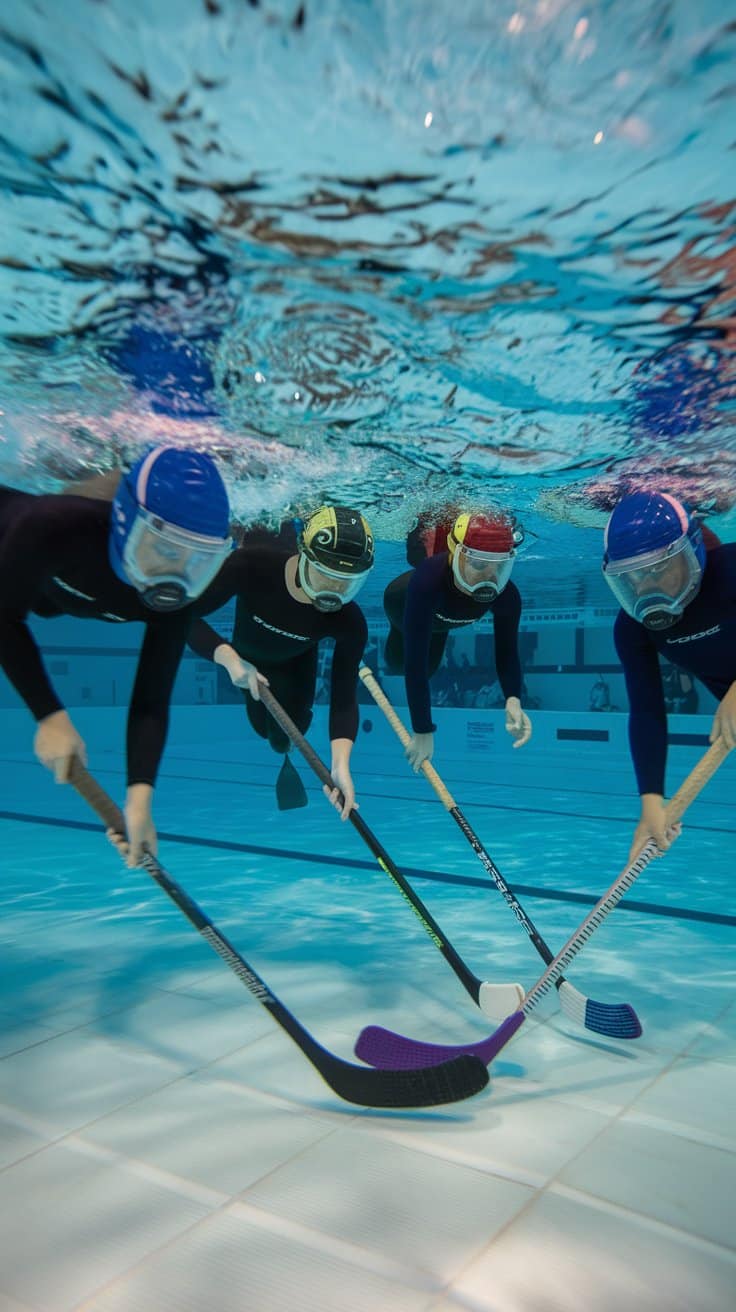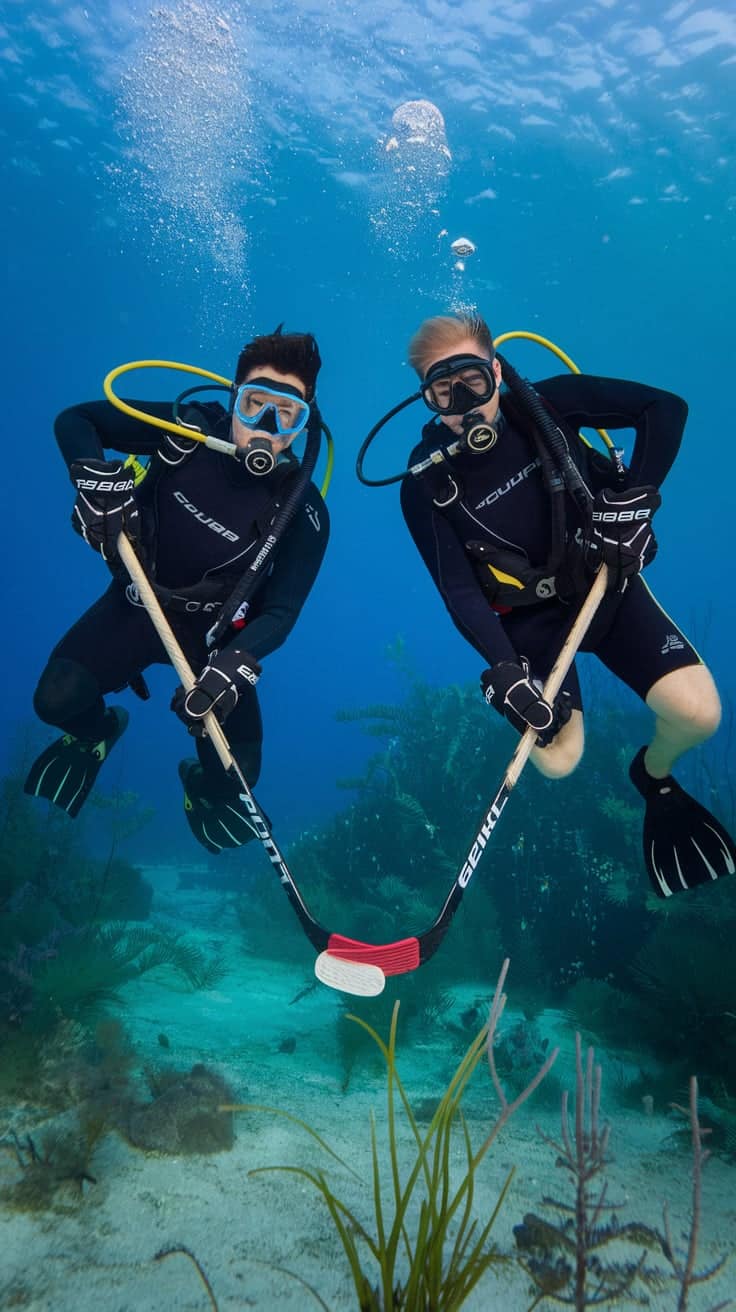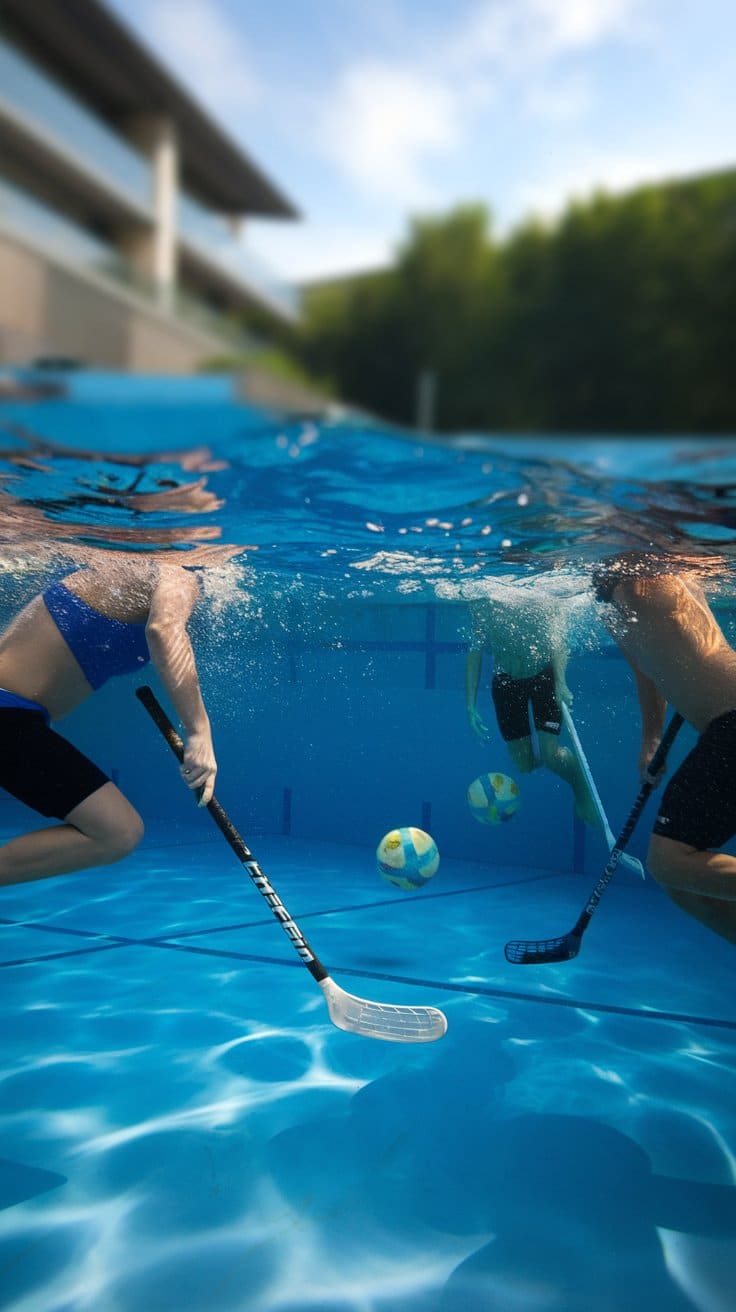Underwater hockey was invented in 1954 by Alan Blake, a British diving instructor and founder of the Southsea Sub-Aqua Club in England. He developed the game as a way to keep divers fit during the winter months when open-water diving was difficult.
I find it fascinating that a game designed as a training exercise turned into an international sport played in over 40 countries today! But how did it evolve? Let’s dive deeper.
Read More:
Underwater Hockey Rules: The Ultimate Guide to This Thrilling Sport!
Dive Into the Action: How Is Underwater Hockey Played?
Essential Gear for Underwater Hockey: Mask, Fins, Stick
Suit Up: The Ultimate Guide to What to Wear for Underwater Hockey
The Birth of Underwater Hockey
Why Was Underwater Hockey Invented?
Alan Blake realized that divers needed a way to maintain their fitness and improve their breath control during the offseason. So, he came up with a game that combined diving skills with teamwork—originally called “Octopush.” The first-ever match took place in Portsmouth, England, with simple wooden sticks and a lead puck coated in plastic.
How Did “Octopush” Become Underwater Hockey?
At first, it was just a local game played by a few divers. But in the 1960s, the sport spread across the UK and into other countries like Canada, Australia, and South Africa. By the 1970s, international competitions began, and “Octopush” became known as underwater hockey worldwide.
Key Moments in Underwater Hockey History
| Year | Event |
|---|---|
| 1954 | Alan Blake invents “Octopush” in the UK. |
| 1960s | The game spreads to other countries. |
| 1970s | First international tournaments take place. |
| 1980 | The World Underwater Federation (CMAS) recognizes the sport. |
| 1990s | Underwater hockey gains worldwide popularity. |
| 2000s | The World Championships attract teams from over 30 countries. |
| 2010s | Increased media coverage boosts global interest. |
| 2020s | Efforts continue to make it an Olympic sport. |
How Is Underwater Hockey Played Today?
The game has evolved a lot since its early days. Today, it’s played in swimming pools with a depth of 6-8 feet. Each team has six players in the water at a time and uses small sticks to push a 1.3-1.5 kg puck into the opposing team’s goal.
Basic Rules of Underwater Hockey
| Aspect | Rule |
| Team Size | 6 players per team, with 4 substitutes |
| Game Duration | Two 15-minute halves |
| Pool Depth | Usually 6-8 feet deep |
| Equipment | Mask, snorkel, fins, stick, gloves, puck |
| Objective | Push the puck into the opponent’s goal |
Expert Opinions on Underwater Hockey
Mark Langley, an international referee, once said:
“Underwater hockey is one of the most challenging and rewarding sports. It requires stamina, breath control, and teamwork. The game’s growth over the years has been incredible.”
Frequently Asked Questions (FAQs)
1. Why Is It Called “Octopush”?
The original version of underwater hockey involved pushing the puck with small sticks, and the movements of players resembled an octopus—hence, “Octopush.”
2. Is Underwater Hockey an Olympic Sport?
Not yet! But the World Underwater Federation (CMAS) is actively working to bring it to the Olympics.
3. Who Are the Best Countries in Underwater Hockey?
The UK, France, Australia, and South Africa are among the top competitors in international tournaments.
4. How Many People Play Underwater Hockey?
There are an estimated 15,000+ active players worldwide.
5. What Makes Underwater Hockey Unique?
It’s one of the few sports that is completely played underwater. Players must hold their breath, use hand signals, and rely on strategy rather than verbal communication.
The Future of Underwater Hockey
Underwater hockey is growing fast. New clubs are popping up worldwide, and more players are joining international competitions. With rising interest, it might one day become an Olympic sport!
Alan Blake probably never imagined that his small diving exercise would become a global phenomenon. Yet, here we are—nearly 70 years later, and the sport is still making waves!
Underwater Hockey’s Impact on the Sports World
As a non-traditional sport, underwater hockey has brought a fresh perspective to the world of athletics. It’s a sport where speed, endurance, and breath control are equally as important as teamwork and strategy.
In fact, some professional athletes from other sports have tried their hand at underwater hockey to improve their lung capacity and underwater agility. It has even been used as a training tool for elite swimmers and divers!
What Does the Future Hold?
- Increased Media Coverage: More global tournaments and streaming options may help increase visibility.
- Technological Advancements: Improved underwater communication gear could make the game even more dynamic.
- Potential Olympic Recognition: With growing international interest, the possibility of Olympic inclusion remains a hot topic.
- More Grassroots Development: More clubs and youth programs could expand the player base worldwide.
Conclusion
From a simple fitness exercise for divers to a global sport, underwater hockey has come a long way. Alan Blake’s invention has evolved into a thrilling and competitive game, played by thousands worldwide.
Whether it ever becomes an Olympic sport or not, one thing is clear—underwater hockey is here to stay. With new players and fans joining every year, the future of this unique sport looks brighter than ever!




